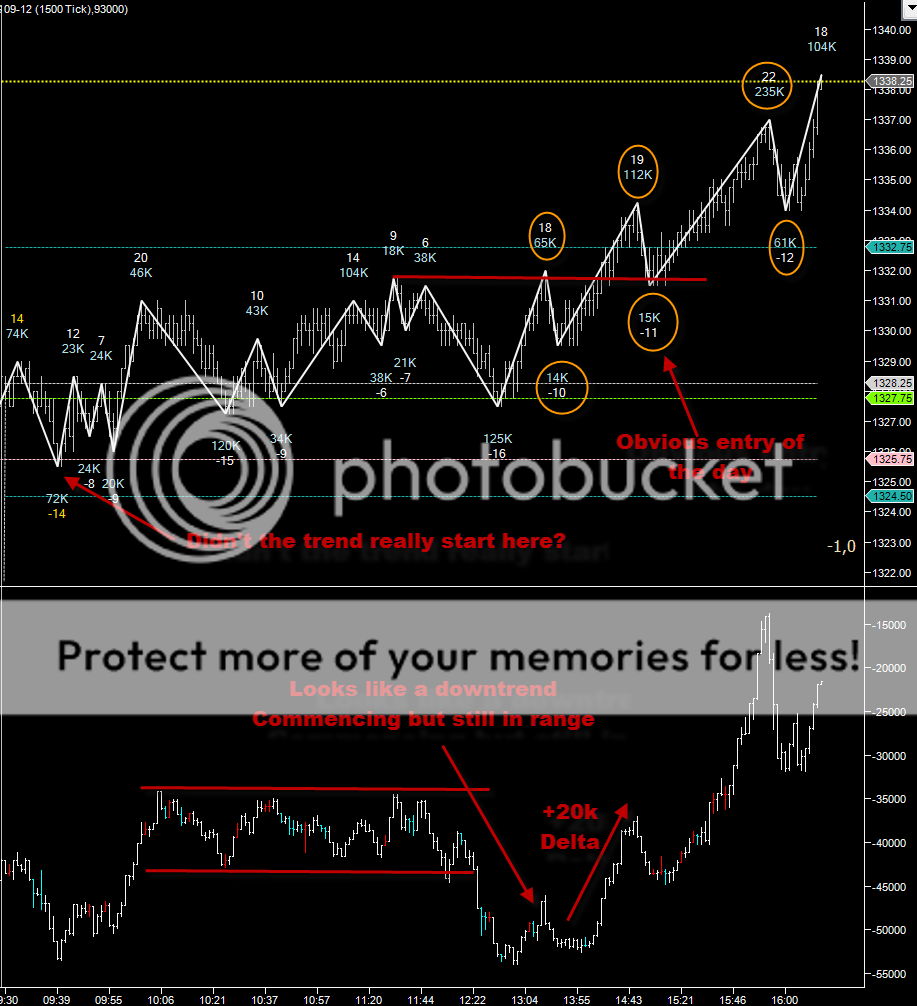Friday:
The delta does help you with the chop & the breakout. Friday was really an uptrend since the Gap Close (pink line) but that probably didn't help many traders stay in till the close because of the volatility.
The obvious 'with trend' entry came quite late in the day.
- move up off yesterdays high (green line) for the third time & just about breaking out of the range - moving up 18 ticks, delta making a 20k up move (decent for the ES)
- retrace 10 ticks but only 14k volume - this is more to do with lack of buy side liquidity than an attempted sell off - hence the term 'liquidity vacuum
- next move up 112k and 19 ticks. Now totally out of the range and officially 'making a move'
- At this point, unless you get a lot of sellers piling in, expectation should be a similar pullback to the last one
- Last pullback was 10 ticks, this takes us back to the top of the trading range (and therefore an area of price rejection and an LVN)
This makes it a pretty high probability with trend trade.
What you are using here is:
- behaviour of the instrument (common intraday behaviour on the ES - pivots around prior days high/low/close)
- measures of participation - CD/Swing Volume
- prior resistance = current support
- volatility measure (measured moves)
Nothing is perfect and this is in no way mechanical. It's just a method of trying to get a read on a market.
The volume is interesting though. 65k to move 18 ticks up, then only 10k to move 10 ticks down. 112k to move 19 ticks up and only 15k to move 11 ticks down. This tips your hand to the fact that the down move is cause by a lack of bids. The reason there is a lack of bids:
- It takes time for bids to fill in behind an up move
- no-one is getting fills on their bids anyway, so it's a bit pointless putting them in on the way up.
This is as simple as I have been able to make trend spotting with some degree of reliability. My opinion is that HLs & HHs = uptrend is fairly unreliable to trade off.
- the good, the bad and the downright ugly.

